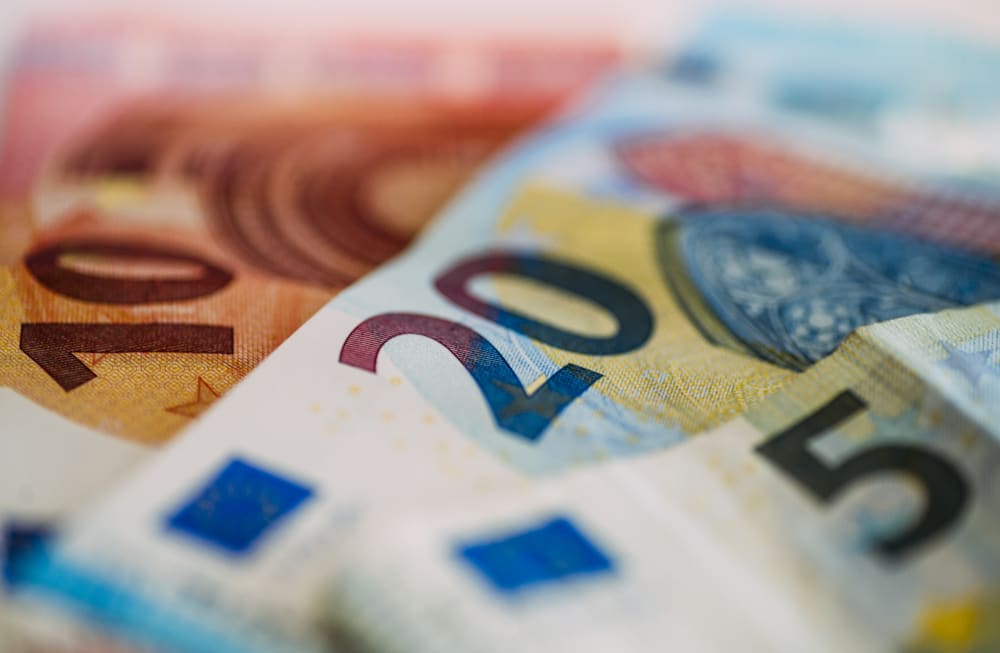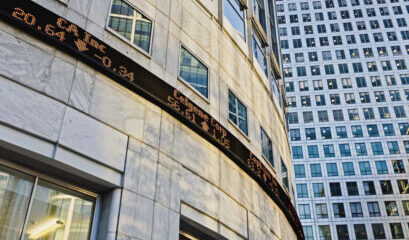Azul files for Chapter 11, armed with USD 1.6bn DIP and exit financing – Case Profile
Azul requested Chapter 11 with the US Bankruptcy Court for the Southern District of New York today (28 May), following multiple rounds of out-of-court restructuring efforts. The Brazilian airline also announced it had agreements in place for USD 1.6bn in DIP financing and up to USD 950m in exit financing.
The case has been assigned to Judge Sean Lane.
Debtwire Restructuring Database Azul SA (access required)
Debtwire Dockets Azul SA(access required)
The company
Azul Linhas Aereas Brasileiras is the largest airline in Brazil in terms of departures and cities served, with approximately 900 daily departures to approximately 137 destinations in Brazil, according to the filing. With a fleet of 226 aircraft and over 16,000 crewmembers, Azul operates approximately 300 direct routes. Azul’s flight network also includes select international destinations, including in the United States, Portugal, France, Spain, Argentina, Uruguay, Paraguay, and Curaçao.
It was founded in May 2008 by David Neeleman, also the founder of American low-cost airline JetBlue. Azul began operating in December 2008.
In addition to having an extensive network, the Brazilian airline also has its own loyalty program, TudoAzul, a logistics business, Azul Cargo, and a travel package business, Azul Viagens.
In 2020, as the COVID-19 pandemic affected the aviation industry, the number of domestic airline passengers in Brazil decreased.
However, according to the company, by the end of 2023, the number of domestic airline passengers in Brazil had already reached 96% of the total number of domestic airline passengers transported in the pre-pandemic period of 2019, indicating that the aviation sector was recovering.
In December 2014, Azul started its first scheduled international flights, to Fort Lauderdale on 2 December and Orlando on 15 December.
On 28 May 2012, the airline announced the acquisition of TRIP Linhas Aereas, a regional carrier company in Brazil. The merger process was completed with the final approval from Brazilian authorities in 2014.
In November 2015, China’s HNA Group agreed to invest USD 450m in Azul. United Airlines followed with USD 100m.
Due to regulatory requirements, the Brazilian airline created a differentiated shareholder structure to appropriately distribute economic ownership and voting rights among common and preferred shareholders, according to its website.
Under this structure, each preferred share is equivalent to 75 common shares and is entitled to receive 75 times the amount of dividends distributed to holders of common shares. Common shareholders have voting control over Azul and preferred shareholders have 100% tag along rights.
The descent
Azul had been the only large Brazilian airline that hadn’t yet filed for bankruptcy protection to deal with the effects of the COVID-19 pandemic on the industry, when the number of passengers and flights abruptly plummeted, reducing net revenue prospects, increasing cash burn and causing liquidity problems.
During COVID-19, Azul preventively reduced the number of flights, suspended plans for new aircraft deliveries, and took other initiatives to cut and reduce operating costs. By the end of March 2020, it had reduced its total capacity by 90% of what was planned for the period and kept BRL 3.1bn in cash and equivalents.
In parallel, the company engaged in talks with lessors and other partners to negotiate new payment terms, aiming to preserve its cash cushion. In April 2020, Azul hired consulting firm Galeazzi & Associados, the aviation consultant Plane View Partners, and law firms Pinheiro Neto and TWK. The team of advisors was mandated to support Azul’s fleet plan strategy and engage with aircraft manufacturers and lessors.
In May, Azul reached an agreement with Embraer to defer 59 deliveries, initially expected to take place between 2020 and 2023. The negotiations with lessors and aircraft manufacturers extended until August, when the company announced it reached an agreement for its first leasing payment deferrals, totaling BRL 3.2bn, until December 2021. Debt with lessors represented 80% of the company’s total debt position at the time.
As part of the efforts to address the economic and business impact of the pandemic on its operations, Azul issued BRL 1.8bn in secured domestic five-year convertible bonds (debentures) in November 2020, paying 7.5% in-kind in the first year and 6% in cash after that.
The convertible bond issuance was anchored by investors including Knighthead Capital Management and Certares Management. The collateral consisted of Azul intellectual property and its loyalty program, and certain rights relating to the use of a hangar and specified equipment at the Viracopos airport in the state of Sao Paulo.
Azul counted on the gradual recovery of leisure and corporate travel to gradually make up for lost revenue, with Brazilian airlines taking the opportunity to increase prices. However, at the beginning of 2022, oil prices soared, due to effects of the Russia-Ukraine war, surpassing USD 100 per barrel, well above the USD 70 per barrel companies had considered when planning operations for the year. Airfares had already reached high levels, leaving limited room to pass on the new fuel increase.
As 2023 approached, Azul faced the need for a new round of negotiations with lenders and suppliers, in order to be able to finance its operations. It resumed efforts to renegotiate debt with lessors, OEMs, and noteholders. In May 2023, Azul reached commercial agreements with lessors representing more than 90% of its lease obligations. Lessors and OEMs received USD 370m in 7.5% senior unsecured notes due 2030. They also agreed to receive an aggregate of up to USD 570m in Azul’s preferred shares valued at BRL 36 per share.
Following the agreement with lessors and OEMs, Azul concluded an exchange offer for its 2024 and 2026 notes for 2024 notes for new 11.5% 2029 notes and the 2026s for new 10.875% 2030 notes. Azul exchanged USD 294.2m of the principal amount of its existing 2024 notes (73.6% of outstanding principal) and USD 568.2m of the principal amount of its existing 2026 notes (94.7% of outstanding principal).
Azul’s restructuring efforts also included a private offering of USD 800m in 11.93% senior secured notes due 2028 in July 2023 to enhance its liquidity position and repay existing indebtedness.
At the end of 2023, Azul’s net debt was BRL 19.3bn, net leverage stood at 3.7x, and its cash position stood at BRL 3.4bn. The prospects at the time were favorable, driven by robust demand and lower fuel prices, and the company revised estimates for EBITDA in 2024 to BRL 6.5bn, from the previous BRL 6.3bn.
However, flooding in the state of Rio Grande do Sul in May 2024, including closure of the Porto Alegre Airport through October, increased pressure on the airline. This was compounded by a temporary reduction in Azul’s international capacity in 1H24, and manufacturers’ delays in new aircraft deliveries.
The airline again renegotiated the terms of its aircraft leases with lessors and OEMs representing 92% of obligations, which agreed to eliminate BRL 3bn in obligations in exchange for up to 100 million new preferred shares. Lease liabilities totaled close to BRL 15bn (USD 2.7bn) as of 2Q24.
In January 2025, Azul completed a restructuring of its obligations with bondholders, lessors, and OEMs. It issued USD 525m in superpriority notes due 2030, in exchange for 2029 and 2030 notes. The restructuring and recapitalization extinguished almost USD 1.6bn in debt from the balance sheet.
In April, Azul raised BRL 1.66bn in a primary public offering of preferred shares as part of its equitization of 35% of its 2029 and 2030 bonds, but was able to raise only USD 8m from a possible USD 200m equity offering.
The company obtained a BRL 600m credit facility from bondholders, aiming to gain some breathing room to try to access other sources of financing over the next few months.
The Brazilian airline faced a debt amortization schedule of BRL 615m (USD 108m) in 2025. Executives had said Azul would be able to make the coupon payments on its 2030 superpriority notes and its 2029 second-out notes, both due 28 May. The overall liquidity pressure was too great, however, and Azul decided it would file for Chapter 11 by the end of the month. It began discussing DIP financing with creditors in the week leading up to the petition.
The debt
According to the filing, Azul’s assets total USD 4.541bn and debt of USD 9.575bn.
In its 1Q25 documents, Azul reported cash plus receivables of BRL 2.3bn (USD 400m), 13.6% lower than in 1Q24. In the same quarter, Azul paid BRL 1.2bn in current and deferred leases, BRL 2.2bn in debt amortizations, and over BRL 600m in interest paid.
Source: 1Q25 Earnings
Azul also reported a net debt-to-LTM EBITDA ratio of 5.2x, mainly due to the depreciation of the Brazilian real against the USD, which impacted the USD-denominated debt. The ratio was 4.4x. considering the conversion of the 2029 and 2030 notes into equity.
The case
Azul filed for bankruptcy this morning (28 May) citing USD 9.6bn in liabilities against USD 4.5bn in assets. Davis Polk & Wardwell represents the company as restructuring counsel.
According to a press release, Azul has USD 1.6bn in DIP financing and the case is backed by restructuring support agreements. Providers include certain bondholders, aircraft lessor AerCap and other partners. It also has exit financing of up to USD 950m lined up.
The USD 1.6bn DIP facility will help Azul to repay certain debt and provide approximately USD 670m of new capital to bolster its liquidity during the restructuring process.
The DIP financing will be repaid using the proceeds of an equity rights offering of up to USD 650m, backstopped by the lenders and further supported by a contemplated additional equity investment of up to USD 300m from United Airlines and American Airlines.
The case was filed with the US Bankruptcy Court for the Southern District of New York and assigned to Judge Sean Lane.
The Chapter 11 includes Azul SA, Azul Linhas Aereas Brasileiras, IntelAzul, ATS Viagens e Turismo, Azul Secured Finance II, Azul Secured Finance, Canela Investments, Azul Investments, Azul Finance, Azul Finance 2, Blue Sabia, Azul Sol, Azul Saira, Azul Conecta, Cruzeiro Participcacoes, ATSVP – Viagens Portugal, Unipessoal, Azul IP Cayman Holdco, Azul IP Cayman, Canela Turbo Three and Canela 336.
The advisors



















